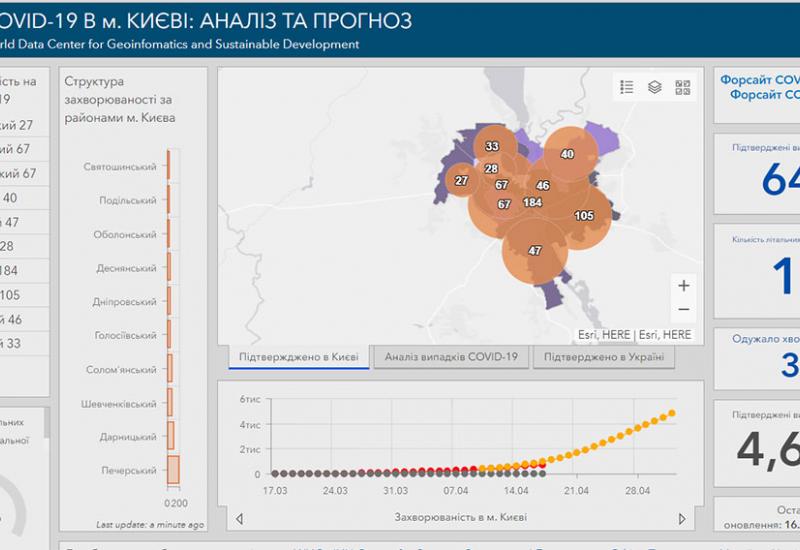On April 9 scientists of the World Data Centre for Geoinformatics and Sustainable Development, which work in the structure of Igor Sikorsky Kyiv Polytechnic Institute under the aegis of the International Science Council (https://council.science/), published the results of the express research on the spread of coronavirus disease in Kyiv. This is the second research on COVID-19 spread rate across Ukraine and its further impact on the country life(more information about the spread across the whole country read at the following link).
Now Kyiv is one of the most virus-infected cities in Ukraine, which is quite predictable considering the fact that it is the capital, its size, and the number of citizens. In fact, it is the region with the highest population density in the country.
Therefore, the further development of the situation is especially important in order to prevent the worst sequence of events in the city and to provide reasonable measures to protect its citizens.
The study was based on open-source geocoding data of COVID-19 patients' place of living in Kiev, published on the Gazeta.ua and the website of Ministry of Health of Ukraine.
Scientists have identified areas of the highest concentration of coronavirus-infected people. According to the researchers, the tendency to increase the incidence rate is observed in those places of Kyiv, which have large areas of modern buildings, that causes gathering greater crowds of people, and where the income level of the population is higher than the bulk of Kyiv citizens. Higher rates of infection of the residents are also associated with their higher mobility and frequency of their business trips and travelings. Of course, the risk of contact the virus is also greater near transport hubs: airports and train stations.
In addition, scientists have defined buffer zones 1 km widthways (fifteen-minute walking on foot), which are the areas of greatest risk to residents. The total area of such zones is 23% of the total city area and about 35% of Kyiv residents live there.
Researchers also carried out predictive modelling of the further spread of COVID-19 in Kyiv by the end of April. The calculations showed that during 26 days since March 16, when the first two people infected with the virus were detected, the daily increase in such cases was (and still is) exponential. At about day 38, it should change to linear. This is the "peak incidence" about which analysts often report. When it happens, the situation will reach a kind of "plateau" when the number of infected people won't grow.
An important part of the published material is the map of the emergence of new zones of coronavirus infection, made on the basis of the recorded cases, and the study of the probability of detection of new ones. It monitors the results of the spatial prediction of COVID-19 distribution in Kyiv.
You can find more information about the express research materials at the following link

